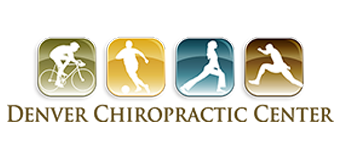Denver Chiropractor Glenn Hyman presents Denver Chiropractic Center’s 1-Page Health News.
Daily Apple Consumption Helps the Heart.
Consuming fresh fruit, such as apples, each day appears to reduce the risk of dying from either a heart attack or stroke by about one-third. Investigators collected data on more than 500,000 adults between 2004 and 2009 and found that fewer than one-in-five ate fruit on a daily basis. However, the researchers found that those who ate about a half cup of fruit a day had a significantly lower risk for developing cardiovascular disease. Lead researcher Dr. Liming Li reports that participants who ate fruit the most often had lower blood pressure and blood sugar compared to those who ate less fruit, which could explain the reduced risk for heart attacks and stroke.
New England Journal of Medicine, April 2016
Mental Attitude: Sleepless Nights Linked to Changes in the Brain.
Chinese researchers report that insomnia may lead to abnormalities in the white matter of the brain, the tissue which carries information between the various parts of the organ. For the study, the researchers recruited 23 patients with primary insomnia and 30 healthy volunteers. The participants completed surveys that allowed investigators to evaluate their mental status and sleep patterns. Using an advanced MRI technique, the research team also looked at the pattern of water movement in white matter to identify any irregularities. They found that participants with insomnia had significantly reduced white matter integrity in several regions of the brain including the thalamus, which regulates consciousness, sleep, and alertness, as well as the corpus callosum, the area that connects the two halves of the brain. Researcher Dr. Shumei Li notes, “Our results can potentially provide the evidence about how the lack of sleep may lead to the impairment of white matter related to emotional or cognitive disorders.”
Radiology, April 2016
Health Alert: Diabetes Has Quadrupled Worldwide Since 1980.
According to a new report, the number of men and women diagnosed with diabetes around the globe increased from 108 million in 1980 to 422 million in 2014, with the most severe increases noted in low- and middle-income countries. Experts say these findings should sound an alarm for large-scale, effective action that focuses on reducing the health and economic impact of diabetes.
The Lancet, April 2016
Exercise: Too Few Children Get 60 Minutes of Exercise Daily.
In this study, investigators observed 453 schoolchildren during a one-week period and found that only 15% achieved the recommended 60 minutes of moderate-to-vigorous physical activity (MVPA) each day. Furthermore, compared with normal or underweight children, the researchers report that the overweight and obese children in the study were be less active overall and achieved fewer minutes of MVPA during school, out-of-school, and on weekends. Senior author Dr. Jennifer Sacheck comments, “Clearly, schools need to be aware of this disparity and should focus on increasing all intensities of physical activity equally for all children across the school-day.”
International Journal of Behavioral Nutrition and Physical Activity, March 2016
Chiropractic: Musculoskeletal Pain Common in Veterans.
A recent study investigated the prevalence of musculoskeletal disorders among United States veterans. The study included 5,237,763 former soldiers and found that non-traumatic joint pain (27%), back pain (25%), and osteoarthritis (21%) are the most commonly reported and treated musculoskeletal disorders among those who received Veterans Health Administration care. The findings show that musculoskeletal complaints are highly prevalent, painful, and costly disorders among veterans.
Pain, March 2016
Wellness/Prevention: Vitamin D Levels Linked to Cardiovascular Disease Risk.
New research suggests that the risk of cardiovascular disease could be predicted by measuring levels of total and bioavailable vitamin D in both men and women. The study analyzed the vitamin D levels of 4,200 individuals aged 52-76 and assessed whether vitamin D levels had any effect on future cardiac events. The findings revealed that individuals with low levels of both total vitamin D and bioavailable vitamin D were at the greatest risk for heart attack, stroke, heart failure, and even cardiovascular death.
American College of Cardiology Scientific Sessions in Chicago, April 2016



